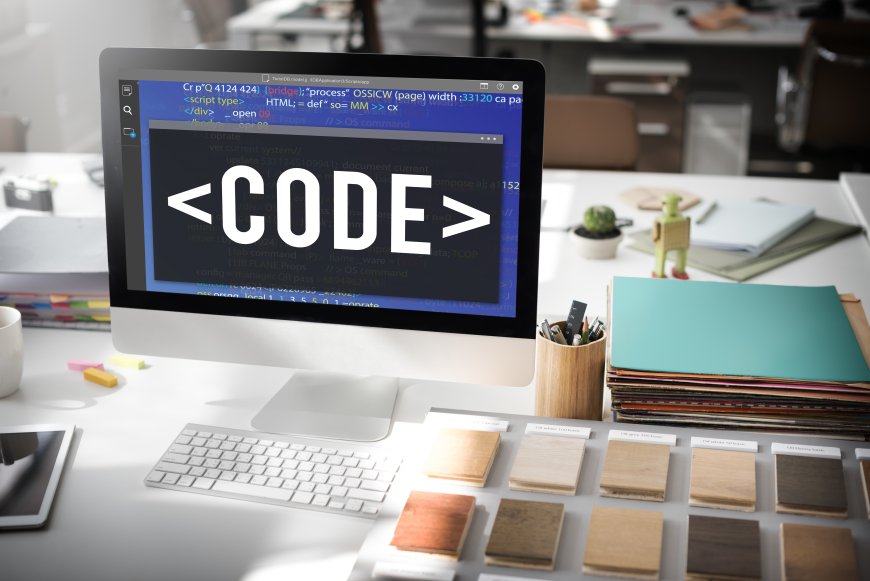How to Write Clean and Maintainable Code
FalconXoft is a web development company based in the USA, specializing in creating tailored web solutions using cutting-edge technologies like Django and Python. With a focus on client satisfaction, they deliver responsive, scalable websites and applications that drive business growth through innovation and technical expertise.
In the realm of web development, producing clean and maintainable code is essential for building robust and scalable applications. Clean code not only enhances readability but also simplifies future modifications and debugging. For businesses seeking the best web development services in the USA, adhering to these principles ensures that their projects are not only functional but also resilient and adaptable. Here’s a guide to writing clean and maintainable code that aligns with industry best practices:
Adopt Consistent Coding Standards
Consistency is key to clean code. Adopting a set of coding standards and adhering to them throughout the development process helps ensure that code is uniform and predictable. This includes consistent naming conventions, indentation styles, and file organization. Standards like the Airbnb JavaScript Style Guide or Google’s Java Style Guide can serve as great starting points.
Write Meaningful and Descriptive Names
Choose variable, function, and class names that clearly describe their purpose. Avoid ambiguous names like temp or data. Descriptive names make the code more understandable and reduce the cognitive load on developers who read or maintain it in the future.
Keep Functions and Methods Small
Functions and methods should perform a single task or operate on a single concept. Keeping them small and focused enhances readability and makes it easier to understand, test, and debug. If a function is trying to do too much, it’s often a sign that it should be broken down into smaller, more manageable pieces.
Use Comments Wisely
While clean code should be self-explanatory, comments are valuable for explaining complex logic or providing context. Avoid redundant comments and focus on explaining why something is done rather than what is done. This approach helps future developers understand the reasoning behind certain decisions.
Implement Error Handling and Validation
Robust error handling and validation are critical aspects of software development that significantly contribute to the reliability and security of your application. Implementing effective error handling strategies helps ensure that your application can gracefully manage unexpected issues, providing a better user experience and preventing abrupt crashes. When your code encounters an error, such as a failed network request or an invalid user input, proper error handling mechanisms allow it to respond appropriately, either by retrying the operation, displaying a user-friendly error message, or logging the issue for further investigation.
Validation, on the other hand, is essential for ensuring that the inputs your application receives meet the expected criteria. By validating user inputs—such as form fields or API requests—you can prevent invalid or malicious data from entering your system. This practice not only helps in maintaining data integrity but also protects your application from potential security vulnerabilities, such as SQL injection or cross-site scripting (XSS) attacks.
Refactor Regularly
Code refactoring is the process of restructuring existing code without changing its behavior. Regular refactoring helps improve code structure and readability, eliminate code smells, and address technical debt. Schedule refactoring sessions to clean up code and integrate new best practices.
Follow the DRY Principle
The DRY (Don’t Repeat Yourself) principle is a fundamental concept in software development that underscores the importance of avoiding code duplication. By adhering to this principle, developers ensure that every piece of knowledge or logic in a codebase is represented in a single, unambiguous place. This approach is crucial for creating maintainable, efficient, and scalable code.
Code duplication often leads to a number of issues, including increased potential for bugs and difficulties in making updates. When the same logic is repeated across various parts of an application, any changes or bug fixes need to be made in multiple locations, raising the risk of inconsistencies and errors. Additionally, duplicated code can make the codebase more challenging to read and understand, as it introduces unnecessary complexity and redundancy.
Furthermore, utilizing design patterns and frameworks that encourage code reuse can enhance adherence to the DRY principle. For example, in front-end development, components in frameworks like React or Vue.js are designed to be reusable, allowing for consistent functionality and styling across different parts of an application.
Leverage Version Control Systems
Version control systems like Git are essential for managing changes and collaborating with others. Use clear commit messages, branch naming conventions, and pull requests to ensure that your codebase remains organized and changes are traceable.
Write Unit Tests
Unit tests verify that individual components of your application work as expected. Writing tests not only helps catch bugs early but also provides documentation of expected behavior. Utilize testing frameworks like Jest or Mocha to ensure code reliability.
Document Your Code
Comprehensive documentation is crucial for maintainability. Include inline comments, function headers, and external documentation to explain the purpose and usage of code components. Documentation helps onboard new developers and provides a reference for future updates.
Conclusion
Writing clean and maintainable code is a cornerstone of successful web development. By following best practices such as consistent coding standards, meaningful naming conventions, and regular refactoring, you ensure that your codebase remains organized, efficient, and adaptable to future changes. For businesses seeking the best web development services in the USA, partnering with professionals who prioritize these practices will lead to higher-quality, more reliable web applications that meet evolving business needs. Embrace these principles to enhance your development workflow and deliver exceptional digital solutions.














